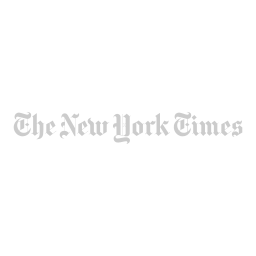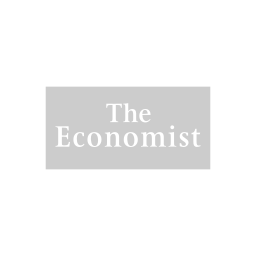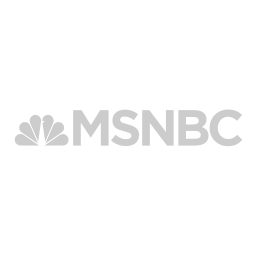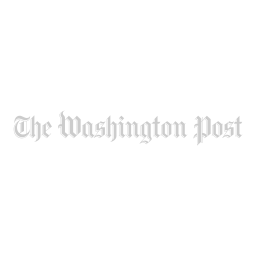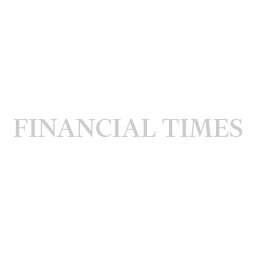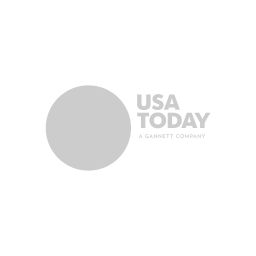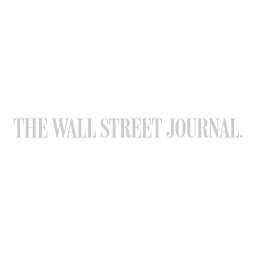What Trump’s new tariffs mean for the wedding industry.
New Tariff Updates for Wedding Pros
New updates to the US tariff policies have been announced since this post was originally published on April 8th.
For accuracy, please substitute the most recently updated numbers in the respective examples while referencing The Comprehensive Guide to Tariffs for Wedding Pros.
APRIL 13
The exemption on semiconductors and electronics announced April 12 is only temporary and they will now be subject to tariffs “in about a month” according to US Secretary of Commerce Howard Lutnick
This was announced on This Week with George Stephanopoulos, a Sunday morning news program on ABC:
Jonathan Karl (news anchor): "So you're saying the big tariffs on things like smart phones and laptops, iPhones...those tariffs are temporarily off but they're going to be coming right back on in a month or so?"
Howard Lutnick: "Correct...This is not like a permanent sort of exemption."Updates on the 90 day pause begins at the 2:38 timestamp and the interview with Lutnick begins at the 6:42 timestamp of Sunday morning’s full episode
APRIL 12
Certain semiconductors and electronic devices, such as smartphones, computers, and various components will now be exempt from the “reciprocal” tariffs
These products are still subject to the 20% Fentanyl tariffs
Exemption will depend on the device’s specific HTS code
See updated guidance (CSMS #64724565) from CBP (US Customs and Border Patrol).
APRIL 10
The White House clarified that the new total tariff on China will now total 145% to account for both IEEPA tariffs (20% Fentanyl and 125% “reciprocal”).
APRIL 9
Trump announces “90 day pause” on tariffs, because people were “getting yippy.”
All countries scheduled to go higher than the universal baseline 10% tariff on April 9 were placed on a “90 day pause,” with the exception of China
This pause is ONLY on the rate increases planned to begin on April 9
All tariffs active prior to April 9th are still active, including the 10% universal baseline tariff rate that went into effect on April 5
Trump announced a new “reciprocal” tariff rate of 125% on China, up from the previous total rate of 104%
For shipments that previously qualified for the de minimis exemption, the new tariff rate for goods sent via international postal network is now whichever of the following two rates is greater:
1) 90% of the shipment’s value, or
2) $75 flat fee until June 1; $150 flat fee afterward
previous numbers were 30%, $25, and $50 respectively
Goods shipped through companies not included in the international postal network – such as DHL, UPS, FedEx, etc – are subject to the full tariff rate
The original de minimis exemption elimination dates are still active
The Comprehensive Guide to Tariffs for Wedding Pros
On Wednesday, April 2nd, President Donald Trump signed an Executive Order implementing sweeping changes to US tariff policies.
I’ve been holding off on writing about the new US tariffs and how they’ll impact the wedding industry until this announcement. While changes to these new policies may still occur in the future, the following post is accurate as of 5pm Eastern, Tuesday afternoon, April 8th.
A few notes before we dive in:
I’ve written this in an “explain this like I’m five years old” (ELI5) format. I know you are intelligent, but this approach will keep us from getting too much into the weeds. Tariffs are complicated and the purpose of this post is to help you run your wedding business, not arm you with a PhD in Supply Chain Management.
I’ve also organized this post in a Q&A format and have included real questions on tariffs that wedding pros sent in through my Instagram stories. All questions are being kept anonymous.
These new policies effect everyone, no matter who you may have supported in the 2024 election. Bad math is bad math no matter which side of the political aisle the calculations come from.
Top 5 facts you need to know about the new tariffs
I expand more on all of this below, but these five facts are worth sharing up front:
Tariffs are NEVER paid by the foreign corporation or government of shipment origin.
These tariffs are in addition to existing tariffs. They do not replace them.
The de minimis exemption is being eliminated for everyone, not just China and Hong Kong.
Most force majeure clauses do not protect you against tariff increases. Review your contract with a real attorney.
It is currently impossible to run a wedding business on a 100% American-made supply chain. You cannot solve the issues caused by these new tariffs by only buying local.
What is a tariff?
A tariff is a delivery tax on the value of goods shipped into one country from another country.
Other names for a tariff include: customs duty, customs tax, import fee, import tax
100% of tariff revenue goes to the government of the country charging them
Is a tariff calculated on the price the importer pays the foreign seller or on a product’s full retail rate?
A tariff is assessed on the “declared value” of the shipment at the Customs port of entry.
This is usually the amount you paid the foreign company you purchased from.
A tariff is not assessed on MSRP (Manufacturer Suggested Retail Price) nor the final marked up price set by the US retailer.
Let’s say you order a table for $500 from a foreign company and do a simple keystone markup so you can sell it to a client for $1000. You will pay the tariff on the $500 value the foreign supplier charged you, not on the final price you set.
Are tariffs good or bad?
A tariff itself is an amoral economic tool.
Whether a tariff has a positive or negative impact depends on how it is implemented and leveraged.
The recent tariff policy changes that Trump announced will do much more harm than good. Larry Summers – former US Treasury Secretary – said, “A very crude estimate of Trump’s tariffs puts the projected loss at US$20 trillion dollars, or well over US$200,000 per family of four.”
These new tariffs are misguided, punitive, and will cause undue burden on American businesses and consumers.
American businesses bear the up-front cost of tariffs since they are required to spend extra capital to pay the tariff bill.
The tariff bill must be paid before Customs will release the imported shipment to a business. No Net 30 or other credit terms are allowed.
The American business accounts for the tariff fee as an acquisition cost, which is included in their COGS (cost of goods sold).
COGS are used in calculating the price point a business will resell the product at.
Higher COGS means higher prices in order to maintain a profit.
The end consumer pays the new higher retail price, which means the cost of the tariff has ultimately been passed on to them.
Because the new tariffs are being levied across the board, nearly every single thing Americans buy is about to get more expensive, whether it is for their wedding or their household.
To add insult to injury, on April 8th, the White House confirmed that China will now face an additional 50% tariff. That means that the new minimum effective tariff rate on imports from China is 104%.
If a florist orders $100 worth of borosilicate glass vases directly from a company in China, the florist will now pay a tariff of $104 on top of the $100 order cost. The total cost of ordering those vases just went up to $204.
Very few factories in the US make borosilicate glass. Of the few that do, most make it for large commercial and residential construction products, laboratory equipment, medical devices, etc – not artistic decor items.
These US companies do not make the artistic decor items because, while it is a huge market, it is not nearly as big as the ones they are focused on. The added cost of expanding their factories, hiring new skilled labor and artisans, creating new packaging processes, etc in order to start producing decor goods is not worth it to them.
This means there isn’t really a US alternative for florists to source these types of vases from and there is unlikely to be one any time soon.
Here’s a 90-second video explainer on tariffs from the Tax Foundation, a think tank that leans center-Right politically:
(If reading via email, click here to view video)
Another major impact of all this on the wedding industry is the fact that the stock market tanked in the days following Trump’s announcement of the new tariffs on April 2nd.
49% of couples who had a luxury wedding (budgets of $96k-$500k) and 47% of couples who had an ultra-luxury wedding ($500k+) last year paid for it by liquidating investments in order to free up cash.
2025 and 2026 couples who were planning on paying for their weddings with investments can no longer count on their portfolios being what they were.
While wealthy wedding clients will still spend, it may not be as much they were initially planning. In this sense, this is very much like it was in 2008.
When do the new tariffs go into effect?
Here is the schedule of when the new tariffs go into effect. The dates and amounts are accurate as of April 8th.
MARCH 12
25% tariff on steel and aluminum, including derivative products
Tents with steel or aluminum frames are considered a “derivative product”
APRIL 3
25% tariff on imported automobiles, including passenger vehicles, SUVs, minivans, light trucks, and cargo vans
For automobile imports from Mexico or Canada: any parts manufactured in the US and shipped to Mexico or Canada for the auto assembly process will be exempt from the 25%.
This is similar to how you can only write your home office off on your taxes, not your entire house.
A 25% tariff on imported auto parts goes into effect May 2
Even cars manufactured at factories in the United States use component parts that are not made in US factories.
APRIL 5
10% baseline tariff on all trade partner countries
APRIL 9
10%-50% tariff on all trade partner countries
Extra 50% on imports from China, in addition to the new rate announced April 2nd.
This brings the minimum tariff rate for China to 104%.
MAY 2
Elimination of de minimis exemption for China and Hong Kong
Imports under $800 will now be subject to the full tariff rates.
FUTURE DATE TBA
Elimination of de minimis exemption for ALL trade partner countries
Imports under $800 will now be subject to the full tariff rates.
Specific date to be announced.
What are the new tariff rates for each country?
The below gallery shows the new Trump Tariff rates for each country, arranged in alphabetical order. (Click on the images to enlarge.)
Note: the additional 50% tariff the White House announced on April 8th is not included in the chart below.
Do the new tariffs replace the old ones?
1) No, the new tariffs are cumulative, meaning they are added on TOP of the tariffs that were already in place.
For example: the pre-existing tariff for goods from China was 20%. The new tariff rate is 34%. That meant that up until yesterday, the new total tariff fee for shipments from China was going to be 54% (20%+34%=54%).
Then, on Tuesday, April 8th, the White House confirmed that an extra 50% tariff would be placed on the previously announced tariffs for imports from China.
This means that the new total tariff fee for shipments from China will be a minimum of 104% (20%+34%+54%).
2) There are some exceptions (aka “carve outs”) to tariffs being cumulative.
In February, Trump increased tariffs on steel and aluminum imports to 25%, which went into effect on March 12th. Aluminum and steel are exempt from the new tariffs announced on April 2nd.
Who pays a tariff?
A tariff is paid by the company or person RECEIVING the shipment for a product.
The person or company receiving the incoming shipment is the importer.
Tariffs are NOT paid by the company, person, or government of the country the product is sent from.
The person or company sending the shipment is the exporter.
A shipment method called Delivery Duty Paid (DDP) can make it seem like the exporter is footing the bill for the tariff fee. They are not. You as the importer are still the one financially responsible for paying the tariff. I explain more about this below.
Can I write off tariff fees on my taxes?
No, businesses cannot deduct the cost of tariffs from their taxes.
Tariffs are considered an acquisition cost and are included in your COGS (cost of goods sold).
Why does Trump say that foreign governments pay the tariffs?
I don’t know why Trump keeps falsely claiming that foreign governments pay for the tariffs.
A foreign government NEVER pays the tariff on a US import.
NEVER, EVER.
Neither does the foreign company or individual selling you the product.
The individual or company importing the shipment into the United States is ALWAYS the one who is financially responsible for paying the tariff.
When is payment for a tariff due?
Tariffs are paid by the importer once the product arrives at the port of entry in the country it is being delivered to.
In the United States, tariff fees are collected from the importer by US Customs and Bureau Protection (CBP).
CBP sends 100% of the tariffs they collect to the US Treasury.
This is similar to how a business collects sales tax on behalf of the government. 100% of the collected sales tax revenue goes to the US government. You don’t get to keep any of it, you are just the middleman between the customer and the US government.
How does importing a product into the United States work?
The US Customs and Border Protection (CBP) has three categories for imports from foreign countries. It is more complicated than this, but in a nutshell:
1) FORMAL ENTRY
Applies to import shipments with a value of $2500+
Formal Entry shipments require comprehensive documentation prepared and submitted by a licensed Customs Broker. You are not allowed to DIY this.
The shipment inspection process is extensive.
To guarantee you can pay the tariffs, CBP also requires that you post a Customs Surety Bond for Formal Entry shipments.
You also pay a merchandise processing fee (MPF) of 0.3464% of the cargo value (currently up to a maximum of $634.62) on top of any tariffs assessed on your shipment.
This fee helps cover the costs of the Customs agents inspecting shipments.
2) INFORMAL ENTRY
Applies to import shipments with a value of $801-$2500
You need to use a Customs Broker to submit your documentation, but it is less extensive.
The shipment inspection process is faster and less intense than Formal Entry.
You are NOT required to post a Customs Surety Bond.
The MPF you pay is a fixed fee rather than a percentage of the cargo value.
3) DE MINIMIS EXEMPTION
Applies to import shipments with a value of $800 or less
The de minimis exemption allows Americans to import a “low value” of foreign goods (up to $800) without paying tariffs.
You do not need to fill out Customs paperwork
You are not required to hire a Customs Broker
The de minimis exemption is being eliminated under the new tariff policies
Isn’t the de minimis exemption only being eliminated for imports from China?
This is a common misconception as the “White House Fact Sheet” only mentions the removal of de minimis for China and Hong Kong.
According to the full Executive Order, the de minimis exemption is being eliminated for every country “once adequate systems are in place to fully and expeditiously process and collect duty revenue.”
It will begin first with China and Hong Kong on May 2nd and then later on for everyone else once the systems are in place.
This means that all imports under $800 in value will be subject to the new tariff rates of the respective countries they are coming from.
There is a caveat to what you’ll pay: if the product is shipped into the US via the international postal network, then instead of the tariff rate you will pay whichever of the following is greater:
1) 30% of the shipment’s value, or
2) $25 flat fee until June 1; $50 flat fee afterward
Courier companies like DHL, UPS, FedEx, etc are not considered part of the international postal network.
You will pay the full tariff rates for any international shipments received via these services.
Why are some of my foreign suppliers adding the new US tariff fees to their invoices if tariffs are my responsibility?
There are 11 terms in international commercial shipping (called Incoterms) that determine who is responsible for what at each stage of the transportation process.
If you are used to spending over $800 with a foreign company and having the shipment arrive directly to your office door without having to lift a finger after placing the order, it means the company you are ordering from is using DDP (Delivery Duty Paid) shipping terms.
DDP means the foreign seller (exporter) assumes all responsibility for the cargo shipment until you receive it, including getting it cleared through US Customs.
DDP is high risk for an exporter as it transfer all liability to them instead of sharing it with you, the buyer.
Some companies that export high-end, fragile products will opt for DDP despite the increased risk because it means they get to control exactly how the product gets shipped. With DDP, they get to select the freight forwarder, the carrier, the Customs Broker, etc.
Because DDP is higher risk and the shipping partners a company chooses may not be the cheapest on the market, the companies that use it tend to have higher prices than some of their competitors that use other terms. You are paying for the convenience of the luxury experience of not having to handle everything yourself.
The late Sylvia Weinstock used to only ship her cakes via Continental Airlines because they were the only airline company that didn’t ruin her cakes in transit.
This is where it can get confusing: if a company has DDP terms, it may seem like they are the one responsible for paying the tariffs.
In reality, DDP allows a foreign company to act as a “Customs concierge” for you. This means they coordinate all aspects of shipment delivery and handle the process of paying the tariff bill. The money that pays for the tariff still comes from you.
You are just sending them the money for the tariff up front so they can pay it on your behalf.
This is similar to wedding planners who use a pass-through model to pay a client’s vendors.
The money seems like it’s coming from the planner, but it’s really the client’s money they’re spending.
If a tariff is not the foreign company’s responsibility, why are some of them offering to split the cost with me?
Certain companies that use DDP terms are generously offering to split the cost of the new tariffs because their calculations show that doing so will be less of a financial hit than losing you as a customer altogether.
They know that if it becomes too expensive to import from them, you will have no choice but to look elsewhere.
These companies do NOT have to offer this and not every company is in a financial position to do so.
Does the Force Majeure clause in my contract protect me from the tariff increases on existing clients?
It depends, but probably not.
Most standard Force Majeure clauses do not protect you against increased costs caused by tariffs.
In addition, courts generally consider tariffs to be a “foreseeable expense” and included “in normal risks of a contract” – even if they cause you economic hardship.
The Seventh Circuit ruled that Force Majeure “applies to objective events which directly affect the parties' ability to perform the contract in question, not the ability to make a profit.”
This means that for weddings you have already booked, you may not be able to pass the increased costs on to the client.
If the price is agreed to in a signed contract and that contract doesn’t include very specific language, you are not allowed to increase that price just because your costs went up.
You can increase the price for future contracts, just not existing ones.
For a Force Majeure clause to be enforceable it has to include language that covers the specific event.
If you have a different clause that allows you to adjust the contract price based on market increases, you may be okay.
If you’re a florist and your contract has a clause that allows you to substitute similar flowers if the original flowers increase in price:
This clause allows for adjustment of the design materials to meet the original agreed upon price. It does not allow for an adjustment of the total contract price.
This clause alone is likely not enough to protect you from the full impact of tariffs.
As always, review your contract with a real attorney and add whichever specific language and clauses you need.
Do NOT rely on ChatGPT for this.
How should I adjust my wedding prices for the new tariffs?
US-based companies have a few options when it comes to adjusting their prices to account for the new tariffs. You can:
Eat the cost yourself
While this is a very generous position to take, it is unsustainable for the majority of wedding businesses.
Pass the fee along to your clients by billing it as a separate “Tariff Surcharge” line item
Pro: this method can help you build or maintain trust with your clients if you transparently list the exact tariff fee and don’t mark it up in any way
Con: if you consider the countries you source from to be a trade secret, this method will divulge that information to your clients
Pass the fee along to your clients by adding it to the COGS (cost of goods sold) in the pricing of your individual products or services.
Increased COGS always results in lower profit margins.
To keep the same profit margin rate as you had before, you will need to increase your prices even higher than the increased tariff cost.
If you are buying from an American wholesaler who already imported the shipment (such as a florist buying from Mayesh) identifying the exact tariff fee will depend on the method they used to adjust their own prices.
If the importing company rolled the tariff fee into their product pricing instead of listing it as a separate line item on the invoice, it will be easiest to just mark up their wholesale price like you normally do.
How will tariffs impact wedding floral costs?
Tariffs will increase the cost of flowers whether you use imported flowers or buy from a local flower farm.
If you import directly from a flower supplier outside the US, you will pay the tariff either at customs or through DDP terms.
If you order through a US-based b2b wholesaler who imports the flowers to resell to professional florists (like Mayesh), that company will pay the tariff fee.
The wholesaler will pass the tariff fee on to you either through increasing their product prices or by adding a separate line item on the invoice.
If you order through a local flower farm, you still won’t avoid the impact of tariffs on flower prices.
There is not a single flower farm in the United States that uses a 100% American-made supply chain. None. Zip. Zilch. Zero.
There is not a single wedding business in the United States that uses a 100% American-made supply chain, either.
Flower farmers import many of the products they use to grow their flowers, such as bulbs, seeds, fertilizer, tools, etc.
Even if the farmer buys a product made in the United States, the US-based company making it likely had to import certain components in order to create it.
For example, potash is used in fertilizer and most of the fertilizer made in the United States uses potash imported from Canada.
As a wedding floral business, it is unlikely you are able to absorb these increased costs.
You will need to increase your prices or add the tariff costs as a line item on your invoices.
How will makeup artists be affected by tariffs?
Makeup artists will be affected by tariffs in much the same way other wedding professionals are.
Let’s say you place an order for French skincare products not sold in the United States. You will now pay a 20% tariff (the new rate for the EU) on the value of that shipment.
Because the de minimis exemption is being eliminated for every country, not just China and Hong Kong, you will now pay the full 20% tariff rate on orders under $800.I
If you buy beauty products from US wholesalers or retailers, you will likely see the tariff fee reflected as an increase in the product cost or as a separate line item on your receipt or invoice.
70% of products on Amazon are imported from China.
The new cumulative tariff rate for China is 104%.
If you buy certain supplies through Amazon like organizers, silicone heat mats, etc you will likely see a major price increase on those items.
Because you don’t necessarily use up an entire product on one client, you need to know your unit costs in order to budget effectively.
For example, if you don’t yet keep track of how many applications you can get out of a bottle of foundation (measured either in number of pumps or faces), start tracking it on your very next client.
This will be an approximate number as not every client will use the exact same amount.
Knowing an approximate number is still better than having zero clue how many faces that bottle will last you.
You can use this number to determine your average costs.
For example, if a bottle of foundation costs you $80 and lasts you 10 faces, your baseline cost of goods sold per client for that product is $8. ($80 / 10)
You will obviously not use the same shade on every client. If you use a certain shade less often, it may expire before you use it up.
In this case, your costs of goods sold per client for that shade will be higher than it is for the more popular shades in that product.
If you only get 5 applications out of that particular shade before it expires and you need to replace it, then your COGS for that shade will be $20 instead of $10. ($80 / 5)
You can then use these numbers to estimate your new COGS based on the increased product price.
If tariffs cause the price of that same foundation to go up to $110 per bottle from $80, your new COGS for the more popular shade product will be now be $11. ($110 / 10 applications)
Your COGS for the shade you only get 5 uses out of before it expires will now be $22 per client. ($110 / 5)
How should wedding vendors that don't order things for each event (like photographers and videographers) be planning ahead? Will tariffs be affecting things like film and cameras?
If you don’t order supplies or products for an individual wedding or event, you still have equipment replacement and other business overhead expenses to plan for.
For example, if you are a photographer and are planning to replace part of your kit (camera body, lenses, etc), you likely have an amount of money you set aside every month (aka a sinking fund) so that you have the full amount saved up by the time you need to make your purchase.
Because these products will now be more expensive, you will need to increase the amount you’re saving each month.
In order to have that extra money to sock away, you will likely need to:
Decrease your spending in another area of your budget, or
Increase your prices to account for the new cost of doing business, or
Do both
Let’s look at a specific example:
Here is where a few popular camera companies manufacture their products and the new tariff rates for the respective countries:
CANON: China (34%), Japan (24%), Malaysia (24%), Taiwan (32%), Thailand (36%)
FUJIFILM: China (34%), Japan (24%)
LEICA: Germany (20%), Portugal (20%)
NIKON: Japan (24%), Thailand (36%)
PANASONIC: China (34%), Malaysia (24%)
SONY: China (34%), Thailand (36%)
Let’s say you are planning to buy a new camera body (Nikon Z8 mirrorless) which is manufactured in Japan. You’ll be ordering from your favorite US-based retailer who directly imports the cameras they sell. We’ll use B&H Photo for this example.
With the impact of the new tariffs, you can reasonably expect to spend between $4344.95 and $4956.22 on a new Nikon Z8 mirrorless camera body, even though B&H currently sells it for $3696.95 and its MSRP rate is $3996.95.
To figure out these numbers, you can reverse engineer how the company you use sets their prices:
$1450: Wholesale Price
$3996.95: MSRP
$3696.95: B&H Photo’s Retail Price ($300 off MSRP)
$2246.95: Current markup amount ($3696.95 - $1450)
Note: this is not pure profit, it also has to cover their other costs
2.54: Current markup multiplier ($3695.95 / $1450)
Exact number is 2.548931034 – I’m writing only the first two decimals in this example, but if you want to re-create these calculations, that’s the exact number to use
254%: Current markup rate (2.54 * 100)
24%: New tariff rate for Japan
$348: New tariff amount (0.24 * 1450)
$1798: New minimum total cost to B&H Photo ($1450 + $348)
$1898.95: New markup amount if B&H Photo eats the tariff cost and keeps the retail price the same ($3696.95 - $1798)
2..05: New markup multiplier ($3996.95 / $1798)
Exact number is 2.055589543
205%: New markup rate (2.05 * 100)
$4044.95: New retail price if B&H Photo adds the exact tariff amount to their previous retail price ($3696.95 + $348)
$4582.98: New retail price if B&H Photo uses the original 254% markup rate (2.54 * $1798)
Many larger companies will feel pressure (from shareholders, etc) to keep their margins the same, which requires keeping their markup rate the same.
$4956.22: New retail price if B&H Photo simply multiplies the tariff rate by the original MSRP (0.24 * $3996.95)
You can also arrive at this same number the long way by doing the calculations above, but using the original MSRP price of $3996.95 and its original markup multiplier of 2.75 (exact number: 2.756517241) instead of staring with B&H Photo’s retail price.
$4656.22: New retail price if B&H Photo marks up based on MSRP and offers the same $300 discount they currently do ($4956.22 - $300)
As far as your budget planning goes, let’s say you planned to purchase the new camera body in December 2025 and started saving up the exact cost of B&H Photo’s price ($3696.95) in January.
You’ve been setting aside just over $308 a month ($3696.95 / 12 = 308.08)
You’ve already made your deposit for April, so you currently have $1232.32 in your sinking fund ($308.08 * 4)
With the tariffs, the new total amount you now need to save for the camera is $4956.22, which is $1259.27 higher than you had originally planned on spending.
You’re now being conservative and want to have the max amount you may need based on MSRP).
You now have $3723.90 left to add to your sinking fund ($4956.22 - $1232.32)
To meet this new number by your original goal date, you’ll need to now set aside $465.49 per month for the remaining eight months ($3723.90 / 8)
This is an additional $157.41 per month from here on out
If you don’t want to raise your prices, you will need to figure out where that additional $3723.90 is going to come from.
If you do zero-based budgeting, the amount will have to come out of other line items in your budget.
I do not recommend dipping into your business emergency fund for this, if you can avoid it.
If you do raise your prices, you can either:
Tack the entire amount on to your next wedding quote
If you charge $10,000 to photograph a wedding, you’ll now need to charge $14,000 ($10000 + $3723.90, then round up)
In luxury pricing psychology, you want the numbers after the comma to end in either 000 or 500
Divide it by the number of weddings you still expect to book by December
If you plan on booking 3 new weddings, you’ll charge an additional $1241.30 per wedding ($3723.90 / 3)
If using a luxury pricing strategy, round up to $1300
These options only work if you’re collecting the full amount for those weddings by December. If you’ll only have received the retainer amounts by your goal date, you’ll need to rework your calculations with those numbers in mind.
This is just one example. You will want to increase your budget for all areas because your costs will be going up in all areas.
This will require taking a hard look at your pricing as well as your spending habits and adjusting where necessary.
Do you foresee anything impacting Bands and DJs?
Yes, entertainment companies, bands, and DJs will need to plan for the increased cost of equipment purchases in the same way that photographers and videographers do.
See the example in the previous section on how to do this.
I’m a stationery designer outside the United States. If I ship my invitations to a US client, does the client pay the import fee (tariff)?
Yes, the American-based company or person who you are shipping to is the importer and is responsible for paying the tariff.
If you are shipping your invitations directly to a US-based client who ordered them through you, the client will pay the tariff once the shipment arrives in the United States.
If you ship directly to a US-based wedding planner who is handling the stuffing, mailing, etc of the invitations on your mutual client’s behalf, the planner is responsible for handling the payment of the tariff fee and billing the client for it.
Both of these examples include orders clients might place with you through US-based third-party platforms like Etsy or Squarespace.
The e-commerce platform being a US-based company does not remove the tariff since Etsy does not touch the physical product and is not the one shipping/exporting it.
In the past, these types of orders were often split into smaller multiple shipments (envelopes in one, invites in another, menus in a third, etc) in order to avoid tariffs by keeping the value amount under the $800 de minimis exemption.
Now that de minimis is being eliminated, the tariff will need to be paid no matter the order size or value.
This means that the total end cost for an American-based client ordering from you will be more expensive for them than it was in the past – even if you keep your prices the same.
If the total ends cost winds up being more expensive than ordering from a US-based stationer they also love, you may lose that client to the American competitor.
This is how tariffs end up hurting companies in other countries, even though you have nothing to do with the tariff and will never see nor handle that money.
The albums I order for my photography clients usually meet the de minimis exemption. How will the elimination of de minimis impact me?
Photography albums are a perfect example of just how complicated figuring out tariffs can be.
If you order your wedding albums from an international company where they are handmade by artisans – such as Graphistudio (Italy), Jorgensen (Australia), or Queensberry (New Zealand) – you may not be charged a tariff at all, even without the de minimis exemption.
But . . . you still might.
Like I said, it’s complicated.
According to Annex II of the Executive Order on tariffs, certain types of photography albums are exempt from the new tariffs.
Whether or not an album is exempt from tariffs will depend on which HTS (Harmonized Tariff Schedule of the United States) code it falls under.
If the format of the photo album is a printed book, it may be exempt:
HTS code 49011000: Printed books, brochures, leaflets and similar printed matter in single sheets, whether or not folded
HTS code 49019900: Printed books, brochures, leaflets and similar printed matter, other than in single sheets
Art and pictorial books are included under this HTS code
If the photo album includes a lithographic process, it may be exempt:
HTS code 49119960: Printed matter, nesoi (not either specified or included), printed on paper in whole or in part by a lithographic process
If the photo album includes plastic sleeves or page covers (like a scrapbook), it is NOT exempt from tariffs.
These types of albums fall under HTS code 39269048
If your photo albums do not meet the exemption standards, you will have to pay the full tariff rate on the value of the album shipment, even if it is under $800.
While the de minimis exemption is slated to be eliminated for every country, not just China and Hong Kong, the date the second phase of elimination goes into effect has not yet been announced.
Until the de minimis elimination becomes effective for the rest of the countries, you can still import shipments under $800 tariff-free.
If you are behind on designing or ordering albums for your clients, buckle down and get that done asap so that they can arrive Stateside while the de minimis exemption still applies.
Are there other tariff exemptions that apply to the wedding industry?
Yes, there are other tariff exemptions that apply to the wedding industry. Some examples:
Musicians and entertainment companies can import sheet music tariff-free.
Event production companies can skip tariff fees when they import certain materials needed to fabricate an installation, such as various types of wood flooring or copper screws.
Stationery designers and artists who specialize in creating mixed media pieces can import epoxide resins tariff-free in order to create custom pigments or specialty items like these custom grasscloth dominoes that Carey Lowe of the Idea Emporium created by hand for a wedding client to use as cocktail hour entertainment:
Video via The Idea Emporium
You can find the HTS codes of the products exempt from tariffs in Annex II of the Executive Order.
That said, the HTS code descriptions in Annex II of the Executive Order are frustrating because they are “provided for informational purposes only” and do not match the full descriptions listed on the US International Trade Commission’s website.
This means that you cannot take the description on Annex II at face value. You will need to search the HTS code on the USITC website in order to read the full scope of the description.
For example, on photo prints:
HTS code 49060000
As described on Annex II: Hand-drawn original plans and drawings; hand-written texts; photo reproductions on sensitized paper and carbon copies of the foregoing
As described on the USITC’s website: Plans and drawings for architectural, engineering, industrial, commercial, topographical or similar purposes, being originals drawn by hand; handwritten texts; photographic reproductions on sensitized paper and carbon copies of the foregoing
“Photo reproductions on sensitized paper” refers to photography prints created on chemically sensitized paper from a film negative or digital file
While the Annex II description makes it sound like all photo prints are exempt from the tariffs, the full USITC description is clear that it only applies to a narrow scope of photo prints. Wedding photo prints do not fall within this scope.
How can wedding planners help manage client expectations? Is there a specific percentage or cushion we should add to client budgets to ready them for the increasing costs?
The biggest thing you can do to manage client expectations is to be as transparent as possible about the potential changes and to communicate this to them as early as possible.
If you don’t already, consider scheduling a monthly check-in video meeting.
If you don’t have anything to update them on, act as a sounding board: give them 15 minutes to vent, process, talk about whatever fears or uncertainties they may have about their wedding decisions, etc.
The “face to face” nature of this type of communication – and consistent frequency – establishes and reinforces trust more effectively than email or standard phone calls do.
To determine how the tariffs will impact your clients financially, you will want to review each client’s budget individually if the client is already booked.
You’ll first need to review their existing vendor contracts.
Do these contracts have clauses that allow for increasing the original agreed upon price?
Remember, most standard Force Majeure clauses do not protect against tariffs and do not allow a vendor to increase the price because of them.
If the contract allows the vendor to increase the price, contact that vendor and talk through what their plans are.
Can they give you an idea of how much they will increase their price?
Do they know whether they will be including the tariff as a separate line item?
Talking through this with the vendor not only allows you and the vendor to build trust and camaraderie with each other, it allows you to get as much clarity as possible.
If the contract does not allow the vendor to increase the price, but does allow them to adjust the design or materials, contact them to talk through what they’re thinking, what you’re thinking, and how you might work together to keep the overall look and feel of the wedding cohesive even with the changes.
Once you have this information from each booked vendor:
Update their respective line items in the client’s master wedding budget if the vendor’s contract allows for a price increase
For budget line items that haven’t been booked or purchased yet:
Look at each one and consider where your client might want to scale back in order to free up money for the increased costs the yet-to-be-booked vendors will pass on to them
To minimize any stress and resentment from your client, put together a plan for how you will present this new information to your client. While the changes will not be entirely welcome, they don’t need to be the end of the world, either.
I recommend creating a beautiful deck that you present to them on a video call.
Include the updated design ideas and budget proposals you’ve collaborated on with their other vendors.
Show how it all ties together to create a wedding that may not be what they initially envisioned but is still incredible.
This will go a lot further in lessening your client’s stress than sending them a bunch of frenetic, random emails that say, “Old design’s no good, must change!” or “OMG, your photographer is now double!”, etc.
As for future clients you haven’t yet booked:
Talk to the vendors you work the most with.
How are they planning to handle the tariffs?
Do they have updated pricing yet?
Take the information they give you and use it to adjust the baseline budget quotes you give your clients.
Make a copy of a previous wedding’s budget and update it with the new pricing for each line item.
This will allow you to tell a client: “I ran the numbers and a wedding we produced in 2024 that cost $ABC will now cost $XYZ” if we did everything exactly the same.
Of course, you are not going to give them the same wedding because you do custom work, but these real numbers will still allow them to “see” the increase and make it easier for them to swallow the upcoming sticker shock of their own wedding.
Unfortunately, there is no easy, pat answer when it comes to what amount or percentage of cushion you add to your budgets.
If you or the vendors you work with source a lot from China, the 104% tariff is going to make your new prices much higher than a planner who sources mostly from countries in the European Union where the new tariff rate is 20%.
Figuring out what you need to add to your budgets will require doing math specific to how you and your vendor partners run your respective businesses.
Do you think these new tariffs will drive more Americans to get married outside the country?
We will likely see an increase of VHNW (Very High Net Worth) and UHNW (Ultra High Net Worth) clients holding destination weddings outside the US.
While wealthy clients are also more hesitant to spend in times of economic uncertainty, they have the financial resources to take their business elsewhere, in this case outside of the United States.
Clients who are merely affluent won’t necessarily have access to the level of funds they did before the tariffs went into effect. A destination wedding may not result in enough savings for them to spend on it.
These clients will more acutely feel the impact of their household costs increasing and may have to cut back their spending in both their personal budget and their wedding budget.
Another factor to consider is that people will have less discretionary income to spend on travel in general. If fewer people overall are traveling, travel costs will go up, not down.
Airlines make money by flying full planes. If they can’t fill the seats, ticket prices will go up in order for them to break even on the cost of the flight.
We will see more of the Americans holding destination weddings outside the country opting to hire more non-US based wedding pros.
The increased travel costs will make it more difficult for American wedding pros to compete for destination weddings.
The increased costs of doing business American wedding pros now have to bear will cause their prices to be less palatable to destination wedding clients who have non-US options.
This does not mean Americans will not book destination weddings anymore. The impact of tariffs will just make it more difficult now.
Why do we have tariffs on PENGUINS?
The penguins know what they did.
Written by
LIENE STEVENS
Liene Stevens, the founder and CEO of Think Splendid, is an author, speaker, award-winning luxury business strategist and behavioral psychologist.
* * *
Founded in 2005 and trusted by clients in 97 countries, Think Splendid is the global leader in wedding industry business consulting.
We provide strategic guidance to industry leaders, luxury brands, hotels, and tourism destinations that serve high net worth and ultra-high net worth brides, grooms, and wedding guests.
































